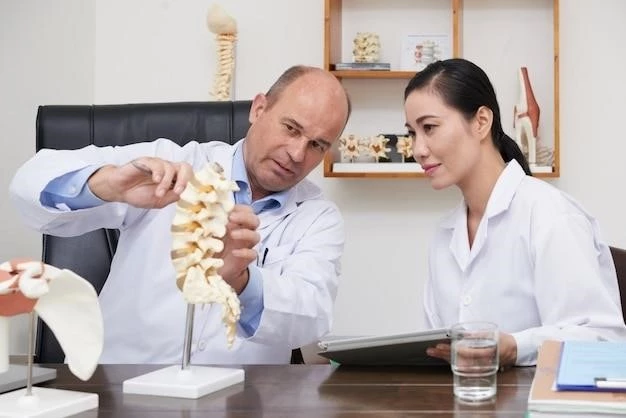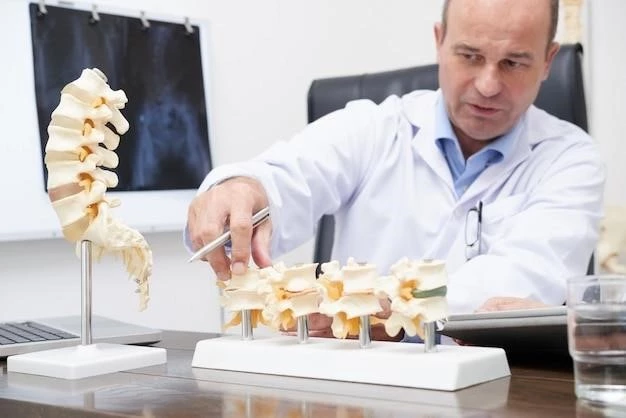Article Plan⁚ Disease ─ Osteochondritis
Definition and Overview
Osteochondritis dissecans (OCD) is a joint condition where a piece of bone and its attached cartilage break down and become loose, typically causing pain, swelling, and stiffness in the affected joint. It commonly affects children and adolescents, often in joints like the knee, ankle, or elbow. The condition arises when a small piece of bone separates due to a lack of blood supply, leading to symptoms like joint catching or locking. Management strategies for OCD vary depending on the size and location of the lesion, and may involve observation, activity modifications, non-surgical interventions, or surgical procedures.
Causes of Osteochondritis
Osteochondritis dissecans (OCD) can develop due to various factors, such as repetitive trauma, genetics, inflammation, and avascular necrosis of the bone. While the exact cause is not fully understood, it is believed to be a multifactorial condition. Factors like genetic predisposition, inflammatory processes, spontaneous avascular necrosis, and repetitive microtrauma can contribute to the development of OCD. Additionally, the transition in vascular supply to the subchondral bone during adolescence may predispose individuals to avascular necrosis, leading to the onset of OCD. Repetitive microtrauma, especially common in young athletes, is also considered a significant factor in the development of osteochondritis dissecans.
Symptoms of Osteochondritis
Osteochondritis dissecans (OCD) presents with various symptoms, including joint pain, swelling, stiffness, and a sensation of catching or locking in the affected joint, commonly seen in the knee, ankle, or elbow. Individuals with OCD may experience discomfort or pain during physical activities or even at rest. Other symptoms can include joint instability, reduced range of motion, and in some cases, joint effusion. It is essential to seek medical attention if you experience persistent joint symptoms, as early diagnosis and appropriate management can help alleviate discomfort and prevent potential complications.
Diagnosis of Osteochondritis

Diagnosing osteochondritis dissecans (OCD) involves a combination of medical history review, physical examination, and imaging studies. Healthcare providers often start with a thorough history-taking to understand the patient’s symptoms and any predisposing factors. Physical exams may reveal joint tenderness, swelling, or limited range of motion. Imaging tests like X-rays, MRI, or CT scans play a crucial role in confirming the diagnosis and assessing the extent of the lesion. These diagnostic tools can help determine the size, location, and stability of the osteochondral defect, guiding treatment decisions. It is essential to consult a healthcare professional for an accurate diagnosis and tailored management plan.
Treatment Options
When it comes to treating osteochondritis dissecans (OCD), the approach may vary based on the size, location, and stability of the lesion. Treatment options can include conservative measures like rest, activity modifications, and physical therapy to strengthen the surrounding muscles and improve joint stability. In cases where symptoms persist or the lesion is large, surgical interventions such as arthroscopic procedures, drilling, microfracture surgery, or cartilage transplantation may be recommended to promote healing and restore joint function. The choice of treatment is individualized and should be discussed with a healthcare professional to determine the most suitable approach for your specific case.
Surgical Interventions
If conservative treatments fail to alleviate symptoms or if the osteochondritis dissecans (OCD) lesion is large or unstable, surgical interventions may be necessary. Common surgical procedures for OCD include arthroscopic surgery, drilling, microfracture surgery, or cartilage transplantation. These surgical interventions aim to promote healing of the lesion, restore joint function, and prevent further damage. The choice of surgery depends on factors such as the size, location, and stability of the lesion, as well as the patient’s overall health and activity level. It is crucial to discuss the potential risks and benefits of surgery with a qualified healthcare provider to make an informed decision.
Non-Surgical Management
Non-surgical management plays a crucial role in the treatment of osteochondritis dissecans (OCD), particularly for small or stable lesions. Conservative approaches may include rest, activity modifications, physical therapy to strengthen the joint, and anti-inflammatory medications to alleviate pain and swelling. Additionally, using assistive devices like crutches or braces can help support the affected joint during the healing process. It is essential to follow the guidance of healthcare professionals regarding non-surgical management, as early intervention and adherence to treatment recommendations can improve outcomes and potentially avoid the need for surgical intervention.
Physical Therapy for Osteochondritis
Physical therapy plays a vital role in the management of osteochondritis dissecans (OCD) by focusing on strengthening the muscles around the affected joint, improving range of motion, and promoting joint stability. Physical therapists can create customized exercise programs to address specific needs and limitations, helping individuals with OCD regain function and mobility. Additionally, physical therapy can aid in reducing pain, swelling, and stiffness in the joint, enhancing overall joint health. It is essential to follow the guidance of a qualified physical therapist to maximize the benefits of physical therapy in managing OCD effectively.
Preventive Measures

While it may not always be possible to prevent osteochondritis dissecans (OCD), there are some steps that individuals can take to reduce their risk of developing this condition, especially if they are involved in activities that put stress on their joints. Engaging in regular physical exercise to maintain joint health, using proper techniques and equipment during physical activities, maintaining a healthy weight to reduce pressure on the joints, and ensuring adequate intake of nutrients like calcium and vitamin D can all help support overall joint health and potentially lower the risk of developing OCD. Additionally, listening to your body, avoiding overuse or repetitive stress on the joints, and seeking early medical attention for any joint symptoms can also play a role in preventing the progression of OCD. It is advisable to consult with a healthcare provider for personalized recommendations on preventive measures based on individual risk factors and lifestyle.
Prognosis and Complications
The prognosis for osteochondritis dissecans (OCD) can vary depending on factors such as the size of the lesion, location, and the patient’s age. In many cases, with early diagnosis and appropriate treatment, individuals can experience significant improvement in symptoms and joint function. However, untreated or severe cases of OCD can lead to complications such as joint instability, progression of osteoarthritis, and potential long-term joint damage. It is essential to adhere to the recommended treatment plan, follow-up with healthcare providers regularly, and engage in preventive measures to optimize long-term outcomes and minimize the risk of complications associated with OCD.
Research and Studies on Osteochondritis
Osteochondritis dissecans (OCD) has been the subject of extensive research and studies in the medical field to better understand its etiology, presentation, evaluation, and management. Studies have explored the multi-factorial nature of OCD, including genetic predisposition, inflammation, avascular necrosis, and repetitive microtrauma as potential contributing factors. Research has aimed to improve diagnostic techniques, treatment strategies, and long-term outcomes for individuals with OCD. Some studies have focused on conservative treatments like physical therapy, while others have examined the effectiveness of surgical interventions such as arthroscopic procedures and cartilage transplantation. Interprofessional teams play a vital role in evaluating, diagnosing, and managing OCD to ensure optimal patient care and outcomes.
Interprofessional Team Strategies
Interprofessional collaboration is crucial in the evaluation and management of osteochondritis dissecans (OCD) to ensure comprehensive care for individuals with this condition. An interprofessional team typically includes orthopedic surgeons, rheumatologists, radiologists, physical therapists, and primary care physicians. Orthopedic surgeons play a central role in the diagnosis and surgical management of OCD lesions, working closely with radiologists for accurate imaging assessments. Rheumatologists can provide insights into inflammatory processes that may impact OCD, while physical therapists play a key role in designing rehabilitation programs for strengthening and mobility. Primary care physicians coordinate overall care and monitor long-term outcomes. By leveraging the expertise of an interprofessional team, individuals with OCD can receive holistic and individualized care for optimal recovery and joint health.
Conclusion and Recommendations
In conclusion, osteochondritis dissecans (OCD) is a condition that primarily affects the joints, often seen in children and adolescents. The management of OCD involves a multidisciplinary approach, including considerations for both surgical and non-surgical interventions based on the specific characteristics of the lesion. Early diagnosis, appropriate treatment, and adherence to preventive measures are key elements in optimizing outcomes and reducing the risk of complications associated with OCD. Research and studies continue to enhance our understanding of this condition, contributing to improved diagnostic techniques and treatment strategies.
For individuals with OCD, it is recommended to maintain a healthy lifestyle, including regular exercise to support joint health, proper nutrition for bone strength, and avoidance of repetitive stress on the joints. Seeking timely medical attention for joint symptoms, following treatment recommendations, and engaging in physical therapy programs as prescribed can aid in managing OCD effectively. Collaborating with an interprofessional team of healthcare providers ensures comprehensive care and personalized treatment plans for better long-term outcomes. By staying informed about the condition and participating in individualized care, individuals with OCD can enhance their quality of life and joint function.
